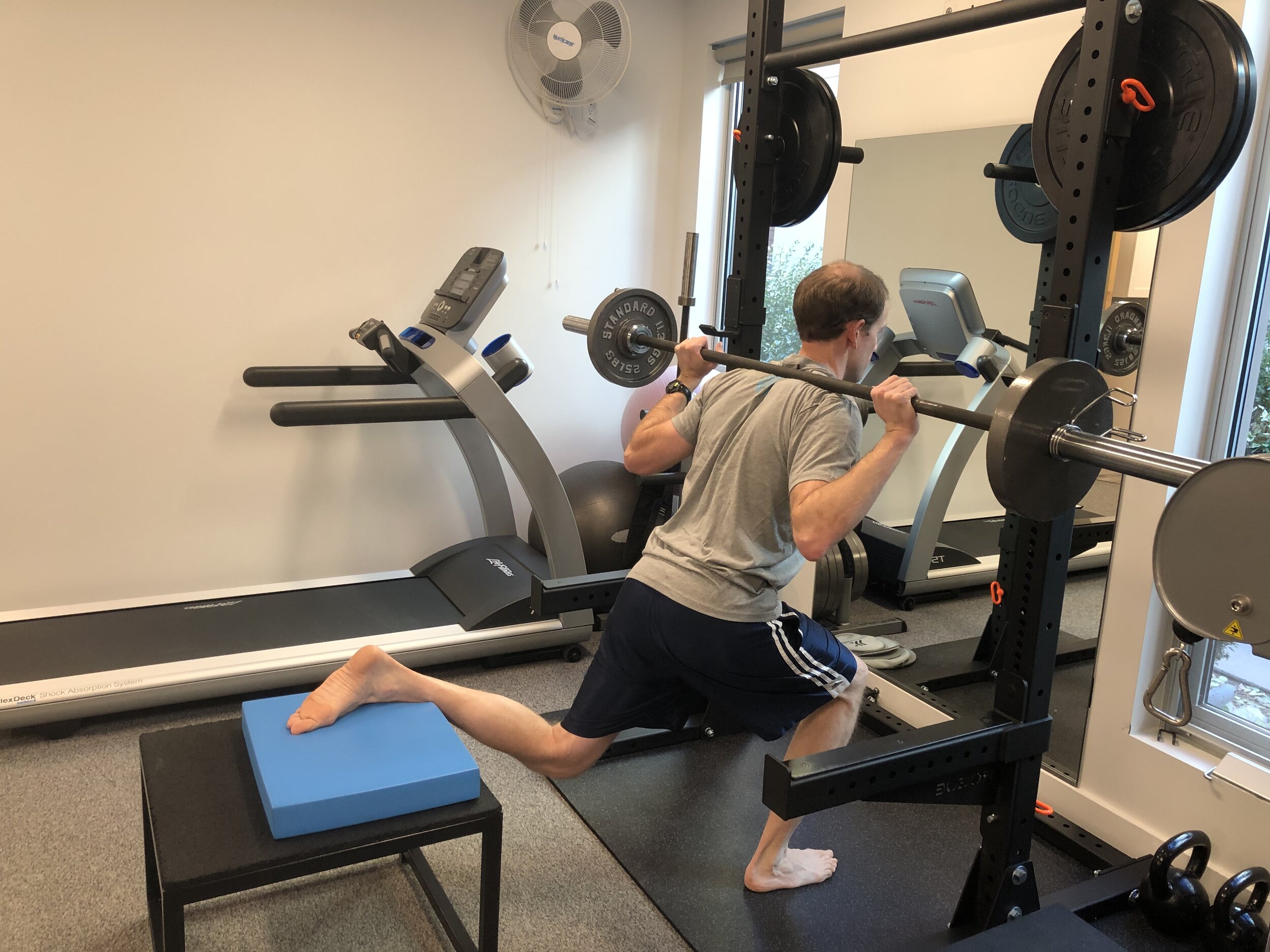In a previous post we detailed the injury risk and loss of performance associated with side to side leg strength imbalances. These imbalances often result from prior or current injury, as well as, the unique demands on an athletes sport or activity. In our Boulder Physical Therapy practice we commonly assess these imbalances with an isometric single leg squat test using a tension gauge. This provides an objective measurement of strength impairments, but may not be feasible for all environments because it requires a dynamometer. A recent research study highlights how the split squat can be utilized to find similar impairments in side to side strength.
Helme and colleagues analyzed the reliability and validity of the split squat compared to standard biomechanical testing methods using force plates (J Strength Cond Res. 2019). Authors studies 26 weight trained individuals and had them perform a maximum strength test using force plates as well as a 5 rep max of the exercise in each side. Participants were given 5 trials to select their 5 repetition max. On average participants produced close to 85% of the force with their lead leg. Authors found the rear foot elevated split squat is a reliable and valid measurement of lower limb strength asymmetries. The sensitivity of the test was reported as + or – 5% for the identification of limb asymmetry. Thus athletes with > 5% asymmetry between limbs may have significant asymmetries based off this test.

